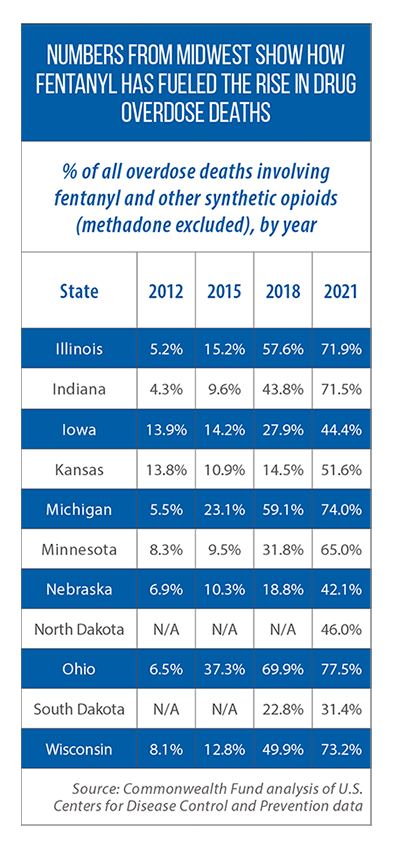
“Reducing Harm, Increasing Criminal Penalties” ~ PDF
Introduction: ‘Single deadliest drug threat our nation has ever encountered’
In less than a decade’s time, the number of drug overdose deaths in the United States more than doubled, reaching nearly 107,000 by 2021.
One of the striking aspects of this rise has been the increasing role played by fentanyl and other synthetic opioids. They were involved in close to 70 percent of all overdose deaths in 2021, compared to only 6 percent of the fatalities nine years earlier, according to a Commonwealth Fund analysis of federal mortality data. Anne Milgram, head of the U.S. Drug Enforcement Administration, has said that fentanyl “is the single deadliest drug threat our nation has ever encountered.”
This threat has received considerable attention in the Midwest’s state legislatures, with many of the recent legislative proposals taking one of two approaches — and sometimes incorporating a mix of both.
The first approach is “harm reduction”: change a state’s laws or invest in new programs that prevent overdoses by reaching and helping people who use drugs. A second common approach has been to increase criminal penalties related to fentanyl trafficking and/or overdose-related deaths.
This Issue Brief was written by Tim Anderson of the Midwestern Office of The Council of State Governments. It was produced as part of CSG Midwest’s support of two binational, interstate committees of the Midwestern Legislative Conference: the MLC Criminal Justice & Public Safety Committee and the MLC Health & Human Services Committee.
The post The fentanyl threat and legislative response in the Midwest appeared first on CSG Midwest.



